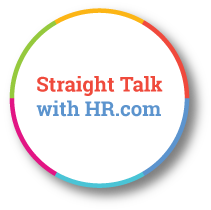“A Positive Candidate Experience Is An Emotional Connection”
Exclusive interview with Matt Gilbert, Vice President, Employer Brand Strategy, Appcast
Posted on 08-21-2024, Read Time: 9 Min
Share:


 |
“Providing candidates with a meaningful experience is always important because their opinions, perspectives and emotions can make a lasting impact even if they don’t move forward,” said Matt Gilbert, Vice President of Employer Brand Strategy at Appcast. |
In an exclusive interview with HR.com, Matt touches upon the importance of candidate experience, the key elements of a good candidate experience strategy, and the new trends, among others.
Excerpts from the interview:
1. What do candidates seek from employers?
Matt Gilbert: At the basic level, candidates seek information and inspiration around four universal areas.- The Financial impact of joining
- The Professional impact of joining
- The Cultural impact of joining
- The Organizational impact of joining
Each area has many attributes, and they align with how candidates view their career or work paths. This shows up in the job search process, as candidates typically start researching a role area or even specific job to learn more, such as fit, how people learn and grow, what type of schedules or place of work, who their colleagues might be, what managers or leaders are like and overall team connection.
Then, they look at the total rewards according to alignment. Is it the same as they have, or is it a step up? Candidates also try to understand how things are done at potential companies to get a better idea of what their experience would be like, will they feel welcome, enjoy the team, etc.?
Lastly, candidates ask questions about the organization, such as senior leadership, vision, industry specifics, policies, programs, beliefs about people, technology, sustainability, diversity, etc.
What starts to form is a scorecard of sorts, either formally or ad hoc, that candidates use to judge an employer worth moving forward with. They’ll also compare several employers to try and find the best fit, the best investment, and the best situation. In many ways, in job search, people act very much like an economic agent, or to put it another way, like a business trying to maximize their ROI.
2. Why is it important today to provide a positive experience to candidates?
Matt Gilbert: Providing candidates with a meaningful experience is always important because their opinions, perspectives and emotions can make a lasting impact even if they don’t move forward.Candidate experience can affect business reputations through word–of–mouth. If a candidate has a negative experience and shares it with their network, this can tarnish an employer's brand. Studies have shown that negative experiences can result in bad reviews, loss of sales, loss of customer loyalty and internal morale.
3. What are the critical areas of a positive candidate experience?
Matt Gilbert: There are signals that can indicate a positive candidate experience. Those signals travel beyond one person and can have a material impact on the quality and quantity of applicants and how they reflect on the larger organization's values, beliefs, and culture.As those experiences aggregate and are shared, they reverberate into online discourse, review sites and internal morale. They help validate employer-of-choice perspectives, which can have a financial impact, such as lowering cost per hire.
A positive experience means an emotional connection. One of the best ways to track positive signals is to ask. For example, implementing an exit capture sentiment tool is an ideal way to get immediate feedback. On a Careersite, or even within an ATS, a popup window can be displayed asking if the information provided was helpful, to give open-ended feedback, or even ask questions.
Positive signals are often mentioned below:
- Candidates felt they could trust the content they engaged with
- Validating authenticity or sincerity
- Having a clear view of value
- Feeling like they understood how culture impacts fit for the organization
By asking directly, we can learn where candidate experience is lacking or working well and continue to improve.
4. To what extent does a positive candidate experience improve recruitment success?
Matt Gilbert: An excellent way to look at this question is to view it from the other side. What would the cost of a negative experience be? Each unintended consequence has a cost: personal, financial, emotional and more.If an organization is sincere in attracting top talent, then improving all aspects of the recruitment process helps it realize that goal by honoring and respecting people, their time, efforts and more. How an organization makes people feel is a powerful indicator of their health as an employer.
5. How and what technology are you using to improve candidate experience?
Matt Gilbert: Technologies vary but the most essential tool is to think about how people judge value, and then delivering on those expectations. Whether through technology, copywriting, design, video making, or other experiences, the closer we align to how people feel, the better we can improve the experience. A low-tech situation with impressive quality in candidate experience will consistently outperform a negative high-tech experience.6. What improvements in terms of technological advancements are required to improve candidate experience in the future?
Matt Gilbert: It will vary significantly in the jobs of the future. All current indications are that AI will play a more significant role in job search and evaluation to help job seekers make more structured investment decisions.AI will help compare employers, roles, benefits, and more. Being prepared to be judged by the content an organization has shared will take on an entirely new dynamic never seen before. Internal emails, Slacks, chats, etc., could be mined to help AI make better predictions if made available. But this comes at significant risk, too.
7. What strategy do you adopt to improve candidate experience? What is your biggest challenge in this regard?
Matt Gilbert: An often-cited complaint from candidates is waiting to hear back from employers with whom they are engaged in a process. With a high volume of candidates, this is challenging. As we develop better insights through tools like AI, we’ll be able to reduce that friction to keep people better informed throughout their process.8. What are the new trends you see coming into the candidate experience space?
Matt Gilbert: Career path-focused recruitment marketing has been on the back burner for many organizations. However, as more data reveals that this is primarily how people search for and evaluate jobs, it will become more critical.It's about more than personalization; imagine being able to allow someone the opportunity to shadow a team or role before joining or applying. As technology improves, features like that will become significant differentiators to improve the fit quality from both sides.
Error: No such template "/CustomCode/topleader/category"!

